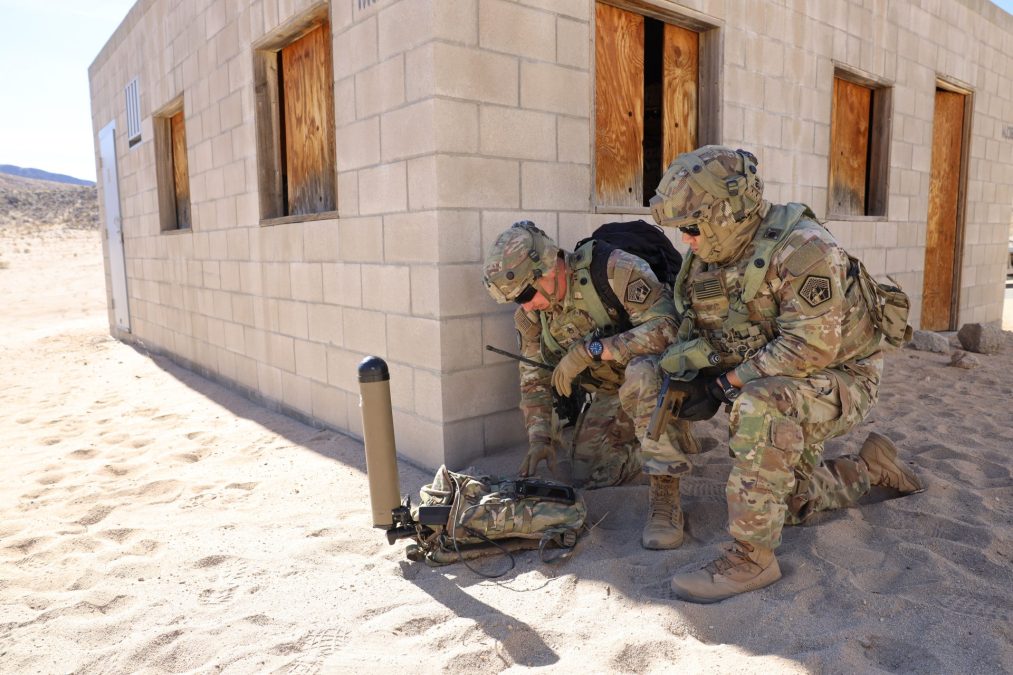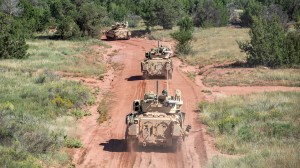Army to see culmination of new forces, guides and capabilities for electronic warfare this year

The Army expects to take a big step this year when it comes to electromagnetic spectrum operations as the culmination of new forces, training, guides and capabilities, according to a top officer.
At the end of the Cold War, the service divested much of its electronic warfare inventory. During counterinsurgency fights in the post-9/11 wars, the Army used blunt jamming tools to thwart improvised explosive devices, which, in turn, inadvertently jammed friendly systems.
But Russia’s first incursion into Ukraine in 2014 served as a wakeup call, and the Army has been on a years-long journey to modernize its EW prowess.
“I think this year will be the beginning of the combination of force structure, training circulars, range guides and field manuals now combined with manpackable gear that allows both the sensing and the activity in the space that heretofore … was different systems or different methods from different units. We’re going to make this a solution across our whole Army,” Maj. Gen. Ryan Janovic, commander of the Cyber Center of Excellence, said in an interview.
In 2017, the Army merged electronic warfare within its cyber branch, meaning soldiers that go to the cyber school at Fort Eisenhower in Georgia also learn to be electromagnetic spectrum professionals.
The Army, up until the last year or so, had no fielded program-of-record jammers — relying for years on quick-reaction capabilities developed to address capability gaps in Europe.
That system, the Terrestrial Layer System Manpack, is a manpackable system, which provides direction finding with limited jamming on-the-move as well, had a history of use by special operations units, allowing it to be awarded and fielded to the conventional force on a much faster timeline.
Through the Army’s transforming-in-contact initiative — which seeks to speed up how the service buys technologies and designs its forces by injecting emerging capabilities into units and letting them experiment with them during exercises and deployments — the service will begin providing units a variety of EW systems for sensing, understanding their footprint to manage it, and jamming.
“We’re excited that this is the year where we’re going to start to see in earnest the combination of equipment arriving into divisions and the formations of trained young men and women ready to take that equipment and demonstrate what it can do on behalf of those division commanders. That’s going to continue as we roll this out to all the divisions, as we continue to equip the force and train the force,” Janovic said. “That’s an area that will remain a priority and it’s one of our chief’s priorities, because we’re all looking at what we’re learning from the Russia-Ukraine conflict, and operations in the electromagnetic spectrum define the future of combat as we see it.”
The Army has been on a path to provide more electromagnetic spectrum forces to units in the way of EW platoons and companies. Janovic noted that just a few years ago, where the Army may only have trained 60 EW personnel, that number is up to 600 over three years.
“It’s just a magnification change as we start to man the formations that we built from platoons and companies all throughout the divisions and then the corps and the [Multi-Domain Task Forces]. We will end up training significantly more EW professionals,” he said.
In fact, Fort Eisenhower, the home of the Cyber Center of Excellence, has sought to invest in training ranges for EW professionals to get out in the dirt with gear and test their classroom courseware given they are increasing the force structure.
“We’re putting them under gear and out in the wood line and really trying to create as tough and realistic training that we can to simulate the environment,” Janovic said. “We’ve got room to grow both in what we’re doing in the classrooms and what we’re doing in the field, but I think that’s the important balance that we have to find. How do you do it in tough, realistic conditions, but also teaching the fundamentals of the EMS and understanding it, the science of it? It’s a complete overhaul.”
The Cyber Center is also working to proliferate EW expertise across the entire Army and the other centers of excellence in an expansion of a partnership that began a couple of years ago.
Janovic noted that all units and formations must be aware of how the electromagnetic spectrum affects their operations and how they maneuver on the battlefield.
“We’re contributing to the body of knowledge and other centers of excellence. How do they put EW into their programs of instruction? How do we help all formations understand what they need to know at the basic level for survivability, if you will, in emissions control, if you’re being jammed, how not to be detected?” he said. “We’re going to have to do this in a very, very collaborative way, because all centers have some aspect of the EMS at work in the foundation of what they do. All formations will be operating in the EMS. When you think about it from a protection standpoint or from an intelligence standpoint, all of us at the centers of excellence agree that we’re going to have to do this somewhat differently.”
As part of that effort, the Cyber Center is improving doctrine and manuals, having recently collaborated with the Intelligence Center of Excellence to develop the Multidomain Operations Range Guide.
The aim is to improve home station training for units. The Army is also working on other training circulars, Janovic said, especially as more lessons are learned from Ukraine where a team led by an Army general officer was sent to loot at electronic warfare.
Those observations will be factored into training, courseware and even combat training centers where forces execute operations against a live opposing force.
“We’ll continue to learn lessons as we fight at home station and fight at the CTCs, and learn lessons about what works and what doesn’t right,” Janovic said. “We’re excited about seeing where that takes us in the next year.”






